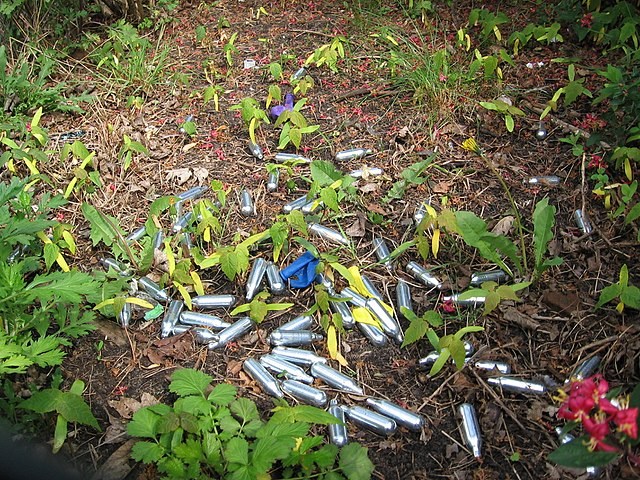The rising popularity of laughing gas as a recreational drug among Flemish youth has seen parks and sidewalks in the region littered with the small canisters, in what the head of one recreational area called "a real plague."
Most commonly use for inflating balloons or whipping cream, the small metal bottles have become an increasingly common sight on sidewalks and public spaces in Flanders, according to Het Nieuwsblad.
Increasingly popular in party scenes in the United Kingdom, the small canisters appear to be causing a "laughing gas rage" in Flanders, according to the director of the De Ster recreational domain in the town of Sint-Niklaas.
He told the Dutch-speaking outlet that the surge in popularity of the small gas bottles was a "real plague," echoing concerns in Britain over the environmental impact of youth's growing demand for the gas.
Nitrous oxide's euphoric and sometimes slightly hallucinogenic effects have earned it numerous nicknames, including laughing gas, epiphany drug or hippy crack.
Inhalation of the gas can cause dizziness, dissociation a temporary loss of motor control and even frostbite due to the cold temperatures the gas is contained in inside the canisters.
While the small quantities held in individual canisters usually limit a users' intake, drug experts in Belgium have warned that the overconsumption or mixing of the gas with alcohol or other drugs could exacerbate its potentially negative effects.
Gabriela Galindo
The Brussels Times

